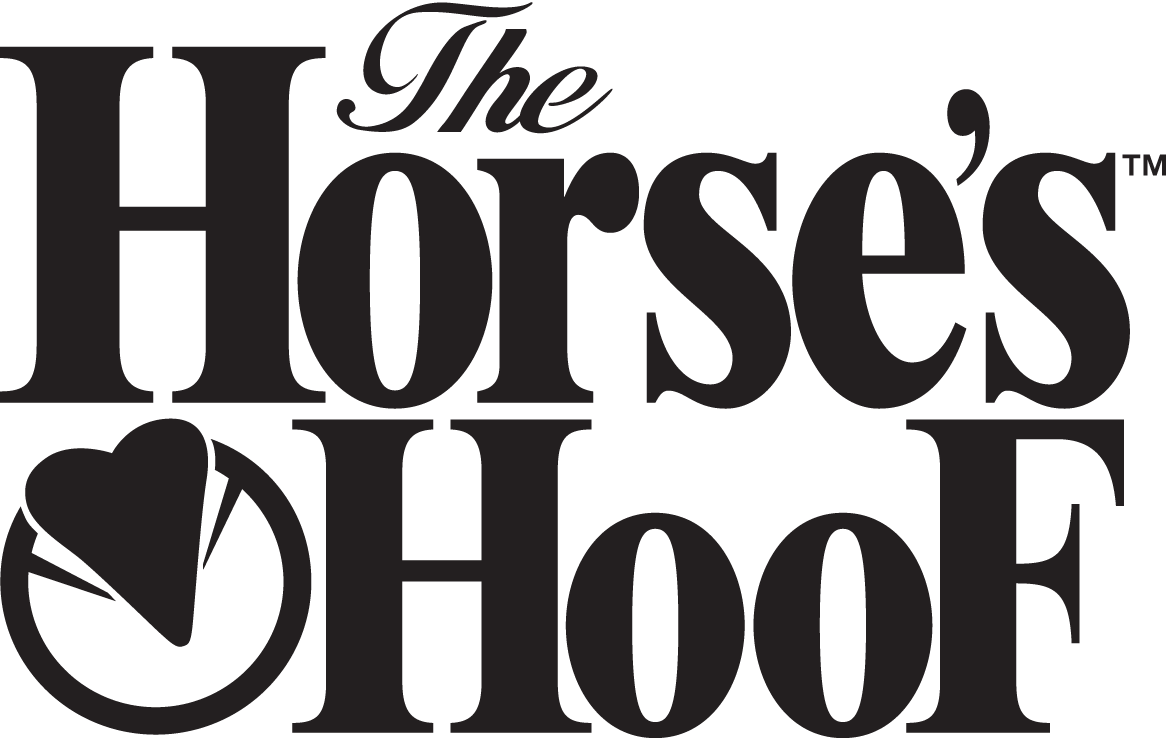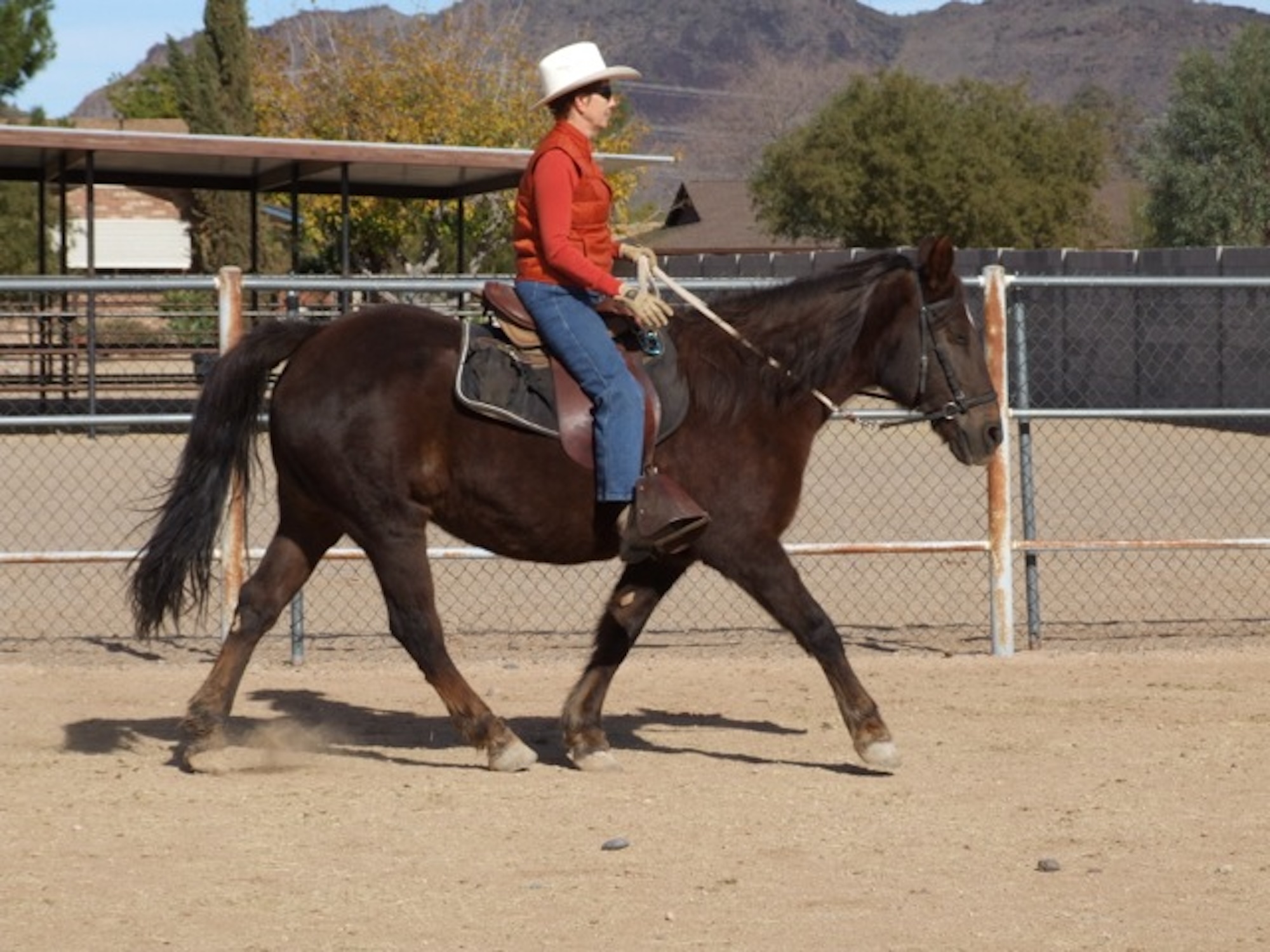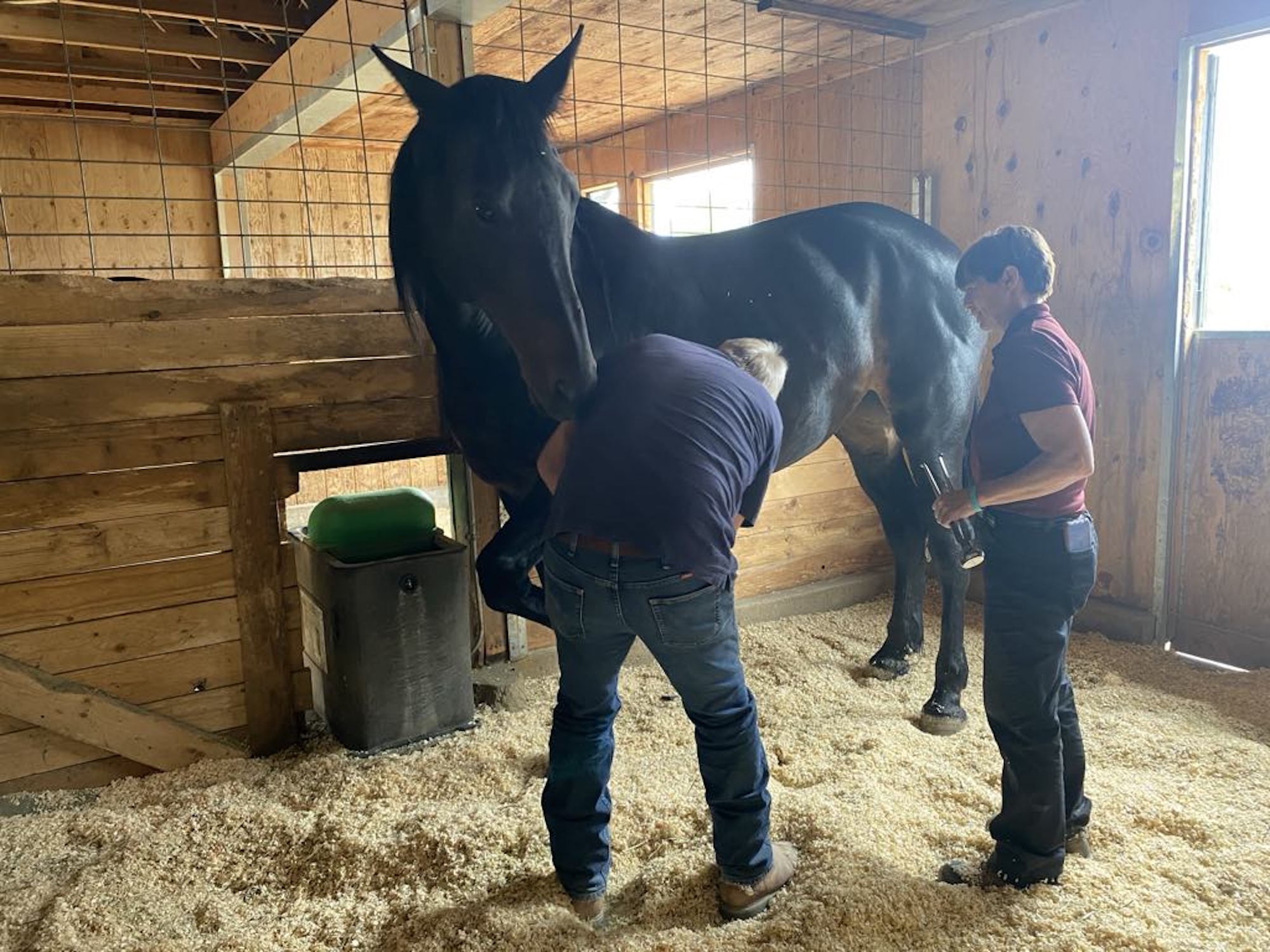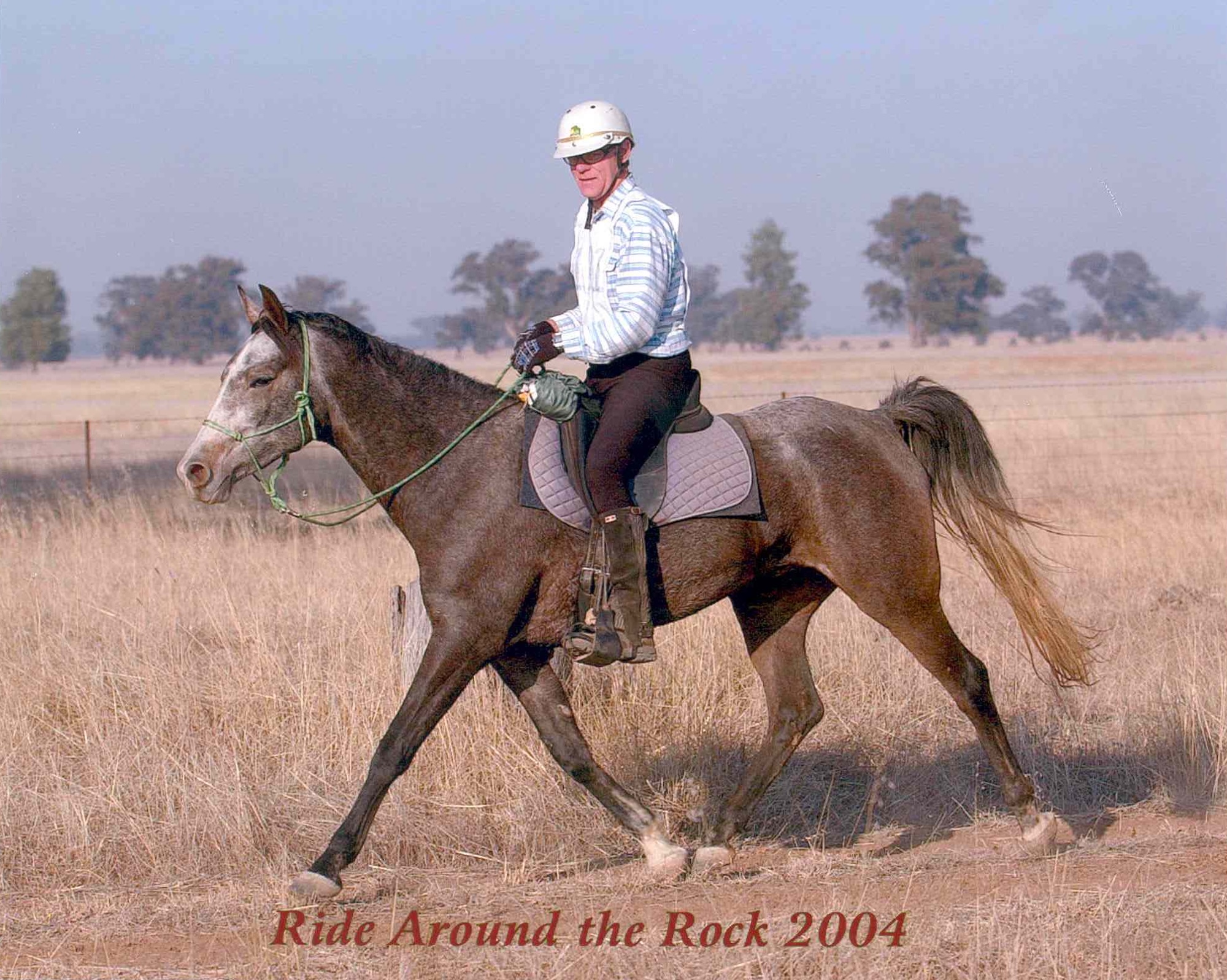Barefoot!? MY horses? Are you crazy? No way! Their hooves are already marginal – not having shoes would ensure that I’d never be able to ride. Besides, they’re gaited horses, and everyone knows that gaited horses need big shoes and high heels.
These were just some of the thoughts running through my mind in March 2001, after I met a friend at the grocery store. We hadn’t seen each other in awhile. When I asked, “What’s new?” she told me she had taken shoes off all 3 of her horses. I was astounded. How could they possibly walk? Haven’t their feet crumbled? Hasn’t lameness resulted? She assured me that her horses’ hooves were in better shape than ever, and that the reason she went to barefootedness was because her horses’ hooves were IN bad shape – a condition actually caused by shoeing. My thirty-odd years of belief that horses need nailed-on metal shoes came into play, and I must have given her a look normally reserved for politicians or the insane. She asked if I would like to read a book. W-e-l-l, OK, but I sure had my doubts. I borrowed her copy of Dr. Hiltrud Strasser’s A Lifetime of Soundness and nearly finished it in one evening. Who was this German vet that challenged conventional wisdom, and how did she know so much about my Foxtrotter’s heel pain and stumbling problems? Or my Tennessee Walker’s high heels and brittle hooves?
After I digested the book and talked to my friend some more, I arranged to have James Welz come out on April 1, 2001 to pull the horses’ shoes. I was very nervous and hoped I was doing the right thing. At that time, Mouse, the Foxtrotter, was in pads and eggbar shoes, having been diagnosed with navicular disease. She was not being ridden much, because she stumbled constantly on the trail, and I had just assumed she was being clumsy. I didn’t realize she couldn’t feel her own hooves or where she was putting them. When James pulled the shoes, we saw just how fragile the horses’ hoof walls were: chipped and dry, with contracted heel bulbs and frogs. The overall hoof health was very poor. James was reluctant to give me any sort of time line of recovery, their hooves were so bad. “Could be a year, could be two or more,” he said.

Above: Mouse’s left hind on April 1, 2001—the day her shoes were pulled after wearing pads and eggbar shoes for months. Below: Mouse’s same hoof, 11 weeks later.

The shoes were gone and there almost wasn’t anything to nail new ones to if I decided to change my mind, so on we went. My gut feeling was that this was the right thing to do. My husband and I began hand-walking the horses for about 20 minutes daily. This was on asphalt in our neighborhood, which was considered good footing for hoof mechanism. Every little pebble caused an “ouch” reaction and bobble. Even the dirt and fine gravel of our driveway was almost unbearable for the tender hooves. Moisture for the dry hoof walls and frogs was essential. We put a water tank in an unused stall and started soaking the ground around it. Soon it became deep enough to hold water and soak hooves up over the coronet band. I also invested in a pair of Davis soaking boots when I began doing dilute apple cider vinegar soaks, as Dr. Strasser had recommended.
James came back out to trim after 2 weeks. My Foxtrotter’s bars had dropped considerably. I could see hard evidence of what had been pushed up inside her hoof, causing her navicular symptoms of pain and stumbling. By the end of April, she had 2-3 rows of ridges around all 4 hooves, which James said were compression ridges. Her feet were so unhealthy they were barely holding her weight! This unnerved me a lot, but I knew for certain that we were on the right track for these horses. Their hooves were telling me a story of pain brought on by years of shoeing with pads and clips. (My Tennessee Walker, Nina, had been shod at age 2, which added even more to the problems, but her hooves were not as fragile as Mouse’s when the shoes came off.)

Nina, age 19, showing beautiful heel-to-toe movement in the gait.
One of the things James had said would probably occur was abscessing. It did. After the shoes were off for about 5 weeks, both horses abscessed in the hind feet, evident by tenderness and swelling from the hocks down. We walked 20-30 minutes per day, followed by apple cider vinegar soaks, until the swelling went down in approximately 3 days. This was the only time the horses abscessed.
After nearly 3 months of the routine of soaking, walking, and trimming, it was time to push the envelope a little. Comparison pictures showed larger, rounder hooves with a significant “growth line” coming in. This told me that the new hoof was much thicker than the old. My husband and I took the horses to Prescott, booted their front hooves, and took them on an 8 mile ride up Spruce Mountain and back. Upon return, neither horse had much chipping of the hind feet and next day there was no evidence of soreness. All the hard work was paying off! After 7 months, we had entirely new hooves – wider, rounder, and thicker. The best thing was when I heard James say, “I just can’t believe these horses did so well, so quickly!”
My gaited horses have now been barefoot for almost 13 years. Mouse is a fat, retired lady in a herd of 9 geldings, living on pasture in Texas and is still barefoot and happy. She is coming 28. I truly thought we would have to put her down from navicular at age 14. Nina is still here with me, she’s coming 22. She’s retired due to some arthritic issues, but is very happy and has beautiful round bare hooves, and still kicks up her heels on occasion!

Carol riding her Morgan mare, Bay B, on an ACTHA ride.
Our newest mare is a lovely, old-fashioned looking Morgan horse we acquired when she was 8, in 2010. She had been shod for about 5 years. James came out the first few days we had her and pulled her shoes. She just walked off over rocks and never took a lame step, then or since! Some exciting barefoot story, huh? Believe me, we were relieved! I trail ride with her and usually don’t even put boots on her.

Above: Bay B’s right front hoof, before deshoeing, and below: 2 years later.

Below: Bay B’s left front hoof, just one month after her shoes were removed.

I am adding another discipline in my riding with this mare. We are also doing classical dressage, in addition to trail riding, in part encouraged and influenced by your editor Yvonne Welz! My instructor teaches classical dressage and will not even accept pupils whose horses have shoes. She wants the horses to have full awareness of where they are placing their feet. I have never had so much fun riding in my life, although I certainly have a special place in my heart for all my horses.
They taught me a lot with their patience, pain, recovery, and willingness to do anything we asked of them. Our Morgan mare will go over just about any ground Arizona has to offer, but I will boot her front feet if it’s sharp rock. Her hinds never even chip. I WILL NEVER SHOE A HORSE OF MINE AGAIN!!!!!!

Bay B, Morgan, barefoot on the trail near Flagstaff, Arizona.
About the author: Carol Peat is a pharmacist, rider, and classical musician. She has been “horse crazy” and owned several horses since the age of 11, and participates in trail riding and classical dressage. She, her husband Dennis, their 2 horses, and 4 dogs live in Glendale and Flagstaff, Arizona.
by Carol J. Peat, published in The Horse’s Hoof Magazine, Issue 53, Winter 2014
See the full content listing of all issues of The Horse’s Hoof Magazine! We also provide instructions on how to read the issues for free on Hoof Help Online.
For a detailed listing of all articles on The Horse’s Hoof website, please visit our Article Directory.




